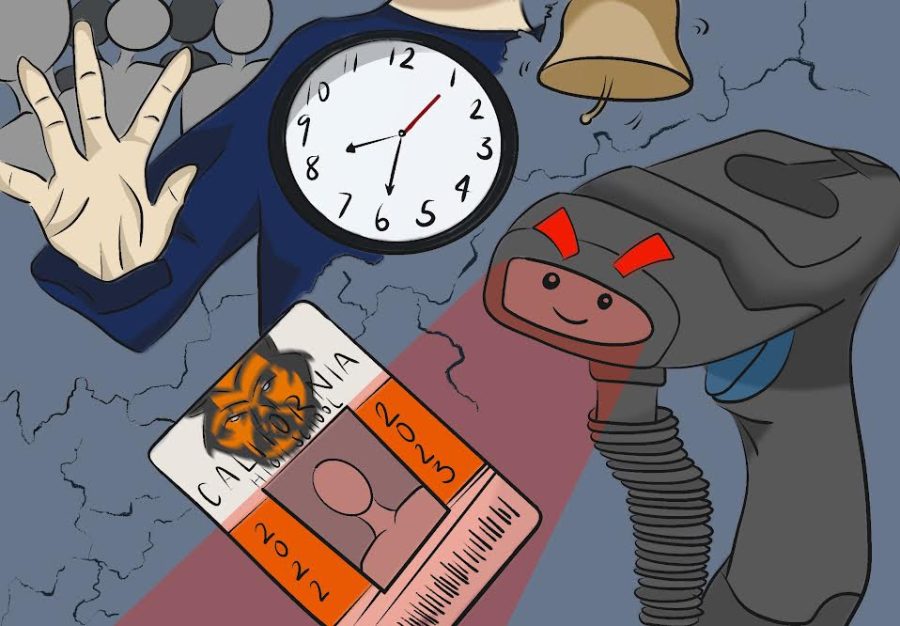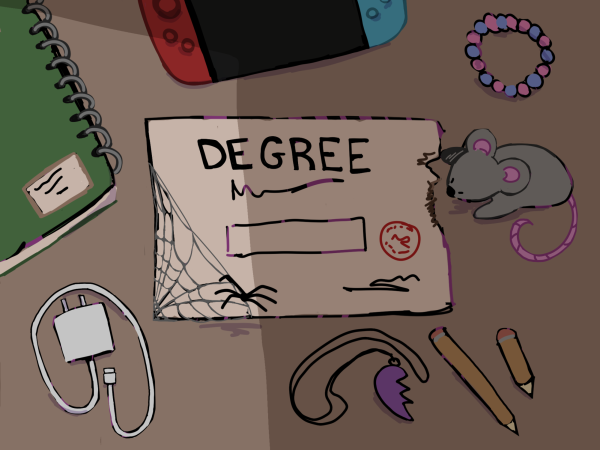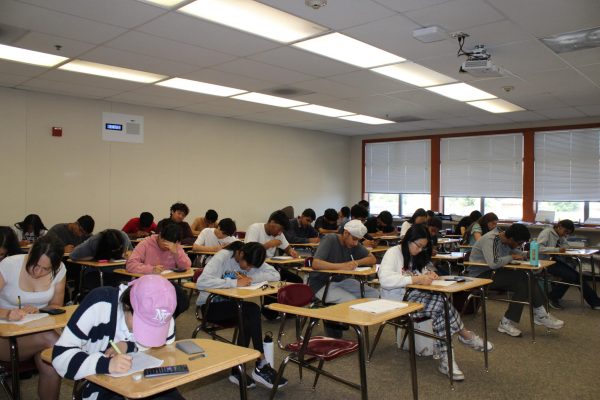New attendance system causes frustrations
Designed to make attendance more efficient, Cal High’s new scanners have caused many frustrations for students, teachers and parents alike.
Forgetting to scan into class and getting marked late is a new nightmare for everyone.
Following the lead of many other district high schools, the Infinite Campus attendance pilot program was implemented last month at Cal High.
According to the Grizzly Community Update newsletter that Principal Demetrius Ball sent out on Oct. 7, 70 percent of teachers voted to use a digitized system to make tracking students’ attendance much easier.
However, numerous teachers and students have had negative experiences with this system.
Students must now begrudgingly scan into the attendance pilot on a designated classroom computer within five minutes of the bell ringing by using their ID card or by typing in their ID number when entering a classroom.
The attendance pilot scanners were officially added to every classroom after a week of being tested in science department classes.
In the Oct. 7 newsletter, Ball wrote that a 15-minute buffer period the school began with for students to sign in would be cut to two minutes once students got used to the scanners.
Students who have lost their ID card or did not receive one have been directed to go to the office to request a new one. On the day of this announcement, the office was swarmed with students trying to request a new ID card. Some were even being turned away because the office could not handle all the requests at the same time.
While teachers can override the tardy or absent mark that students receive with the attendance pilot, some teachers don’t bother fixing it and leave it as is. But many students do arrive on time and forget to scan in, mistype in their ID number, or the Pilot bugs.
This causes a big problem for some students because their parents receive a notification when a student has been marked absent or tardy. Because of this, the attendance office gets backed up because of the sheer number of calls from parents trying to confirm their child’s attendance.
In addition to parents now having more responsibility over the attendance of their children, now teachers are being told to double-check the attendance after students scanned in to make sure that the scanners are working properly.
This completely defeats the purpose of having attendance taken with the scanners because teachers are now taking time out of their class to double check it.
Outside many classrooms, there are long lines of students waiting to get into the classroom because of the backup at the computer as students scan or type in their ID numbers.
Long lines of students trying to scan in before the bell rings causes chaos and can also make students late because everyone is trying to clock in at the same time since the two-minute buffer time was not long enough.
A recent change of the buffer time to five minutes accommodates some teachers who are not in their classrooms before the bell rings. It allows all students to have time to scan into class on time and creates a more accurate attendance record.
The new buffer also helps students who forget to scan in to get a reminder from their teachers or other students scanning in. Though this solution alleviates the strictness of the attendance scanner, the new buffer doesn’t change the technical issue and the accidental mistypes that may happen.
From this, more and more students are going to be marked absent, whether they are actually present during class or not.
As stated in Ball’s newsletter, one of the other ideas behind the scanner was to add a system to make tracking students during tutorial easier. But after testing this system, it proved to not work out and created yet another issue administrators have to troubleshoot and test.
There have also been some technical problems with the scanners because the computers were logged out or the system was not working for certain teachers during certain periods, and students asking the teacher if they need to scan in is a hassle.
The previous way of taking attendance caused no such issues like what we are seeing today. It can be said that students need to just get used to this new system just like any other change. However, in this instance where there are increased numbers of incorrect student absences, the system needs to go back to the way it used to be in order to prevent these ongoing problems.
Ball addressed issues with the new system in his Nov. 11 newsletter. He promised that the administrative team would ease the consistent student absences and phone calls to parents caused by the new system by the end of this week.
Whether we see this problem being solved or not, it does not change the fact that students, parents, and staff experienced this daily hassle for too long.
While this system looks beneficial on paper, it has proven over the past month to be a real burden at Cal.

Senior Yining Xie is a Managing Editor for the Californian and has been on staff for three years. She is excited to work more on the design and layout...


